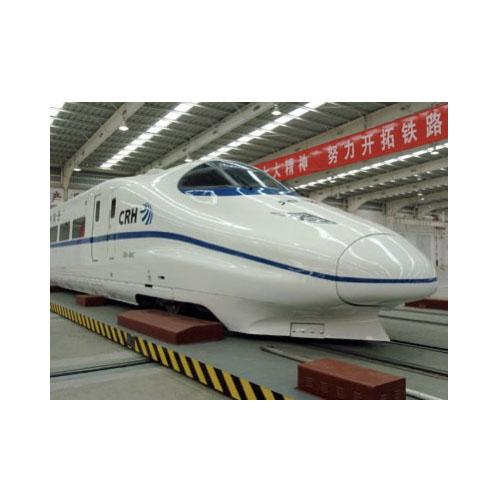Renewable Overview + View All Products/Technologies
Environmental Overview + View All Products/Technologies Frp Dustbin

A-S-H® Material and Ash Handling
Thermal Overview + View All Products/Technologies
Company Overview + View All Products/Technologies
Critical thermal performance for optimal plant efficiency
B&W's SPIG natural draft and induced or forced draft wet cooling towers are designed for a wide range of project requirements such as high seismic and wind loads, vibration control, corrosion resistance, low-noise emission, sub-freezing operation and fresh, geothermal, sewer or sea water applications. Cooling tower structures can be customized using fiber reinforced polymer (FRP), precast or cast in situ concrete, steel or wood.
SPIG complies to the main reference codes, guidelines and applicable regulations and customer requirements for the design of cooling plants, to allow safe operation, easy maintenance and energy efficiency.
Download our Cooling Towers brochure (PDF)
Download our Wet and Dry Cooling System Services brochure (PDF)
Mechanical draft field-erected cooling towers are used in a wide range of cooling applications such as power plants, industrial processes, refining, manufacturing and HVAC&R. Mechanical draft cooling towers use one or more large mechanical fans to move air through the tower.
Water is pumped into the tower through a main header and is sprayed over the fill surface. Depending on fan position, mechanical draft cooling towers are classified as either induced draft or forced draft and can be either counterflow or crossflow depending on the relative direction of water and air.
B&W SPIG counterflow cooling towers are designed and configured to meet critical customer thermal performance in a cost-effective manner. Our crossflow cooling towers are designed for lower energy consumption and operating costs while providing ease of inspection and maintenance access.
FRP cooling towers have gained acceptance as a smart alternative to wood, concrete or steel thanks to its outstanding properties. FRP cooling tower structures consist of a framework made by structural shapes of fiberglass composite, stiffened with diagonal braces to transfer wind, earthquake and other live loads to the basin. A large area of the fan deck is walkable and designed to allow easy maintenance.
FRP cooling towers are considered the preferred material for harsh and corrosive environments such as oil refineries and petrochemical facilities, offering these features:
The concrete cooling tower structure is made of reinforced concrete and is suitable to resist aggressive waters. The precast concrete design has been implemented to meet stringent project deadlines.
The shell and structure are designed to resist wind loads as required by local codes and standards. It can also be designed to resist seismic loads if required. Concrete cooling towers can be precast or cast in situ. The use of prefabricated elements is preferred when project deadlines dictate a faster turnaround.
B&W SPIG’s wooden cooling towers use carefully selected pressure treated timber for cooling tower use. Structural cladding is provided by means of FRP corrugated panels. The fan deck provides suitable supports to withstand normal live and operational loads.
B&W SPIG’s environmentally sound cooling towers contribute to safeguarding the delicate marine ecosystem and to reduce environmental impact. Our sea water cooling towers help to preserve costly desalinated water, and also results in reducing the carbon footprint. When using sea water as make up, material selection is very important. We use corrosion-resistant fiber reinforced plastic (FRP) structures along with high-resistance steelworks and hardware. The mechanical equipment is protected with suitable coatings to provide the highest degree of protection for salt water application.
As reported in the Cooling Tower Institute Journal (Vol. 24, No. 2):
Sea water hybrid cooling towers
Noise in a cooling tower can be generated by the axial fans, water falling from filling or other mechanical equipment. B&W SPIG customized cooling towers are suitable to reduce noise pollution where local requirements place limits on the noise levels.
We have extensive expertise in sound-attenuation cooling towers, designed for very low sound emission by using low noise and ultra-low noise fans. We can also provide other noise-abatement solutions, including water impact attenuation systems on the water basin, inlet and outlet silencers, sound proofing boxes on the motor, and noise attenuation walls.
B&W SPIG has also engineered and installed a variety of cooling towers in specialty applications such as hybrid cooling towers (wet/dry), seawater cooling towers, and noise-abated cooling towers.
Natural draft cooling towers, also known as hyperbolic cooling towers, are typically the preferred solution when processing large water flows such as in power plant applications. The working principle is that hot air moves upwards while cool air is drawn into the tower through an air inlet at the bottom.
The main advantages of natural draft cooling towers are that no fans are utilized, saving power and emitting lower noise. With no moving parts, there is limited maintenance and a long operating life cycle. For space-limited applications, a natural draft tower can be supplied with fans located around the cooling tower circumference to increase the airflow amount and reduce the overall size.
Please fill out the form and a representative will contact you shortly. We look forward to hearing from you.
Unable to process your form submission, please try again later.

Frp Tray Thank you for contacting Babcock & Wilcox. A B&W representative will contact you soon.